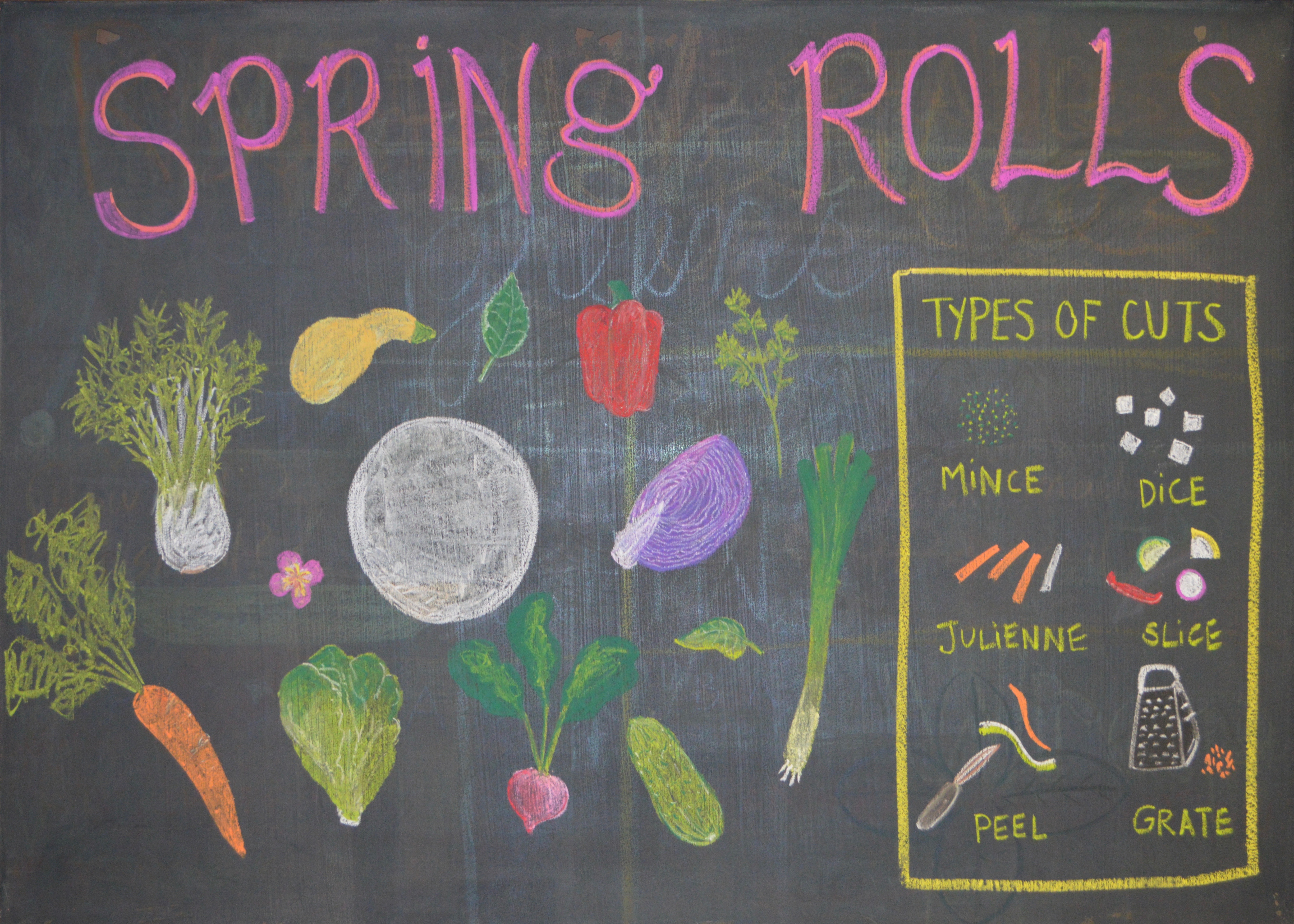For the Chef Meeting
- Recipe
- Ingredients and tools for demonstration
- Visual aid
BEFORE YOU BEGIN
- Collect all the tools and ingredients and distribute them to the tables
- Gather supplies for the Chef Meeting
- Create the visual aid
- Copy the Spring Roll recipe to hand out
- Set up a station for making the dipping sauces





